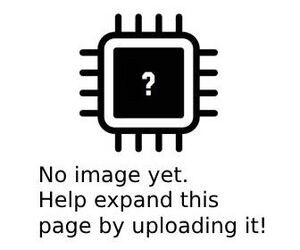More actions
| MacBook Pro A2289 Not turning on, ~0.23-0.31A current draw at 5V repair | |
|---|---|
| Device | MacBook Pro A2289 |
| Affects part(s) | Motherboard |
| Needs equipment | multimeter, soldering iron, soldering station |
| Difficulty | ◉◉◉◌ Hard |
| Type | Soldering |
This article is a stub. You can help Repair Wiki grow by expanding it
Problem description
No Power, 5v and ~0.23-0.31A, Cycling or not cycling on the 820-01987 logic board diagnosis and repair.

Symptoms
- MacBook not turning on
- No voltages are present
- Only drawing 0.23-0.31A current at 5V when measured with USB-C meter.
Solution
Diagnostic Steps
Check for DFU or Recovery Mode
- Connect the MacBook Pro A2289 to another Mac or MacBook via the master port (top left side USB-C port, closest to the display).
- Use Apple Configurator 2 to verify whether the device is in DFU or recovery mode.
- If the device is in DFU mode, proceed to "Device stuck in DFU mode due to corrupt firmware" in the repair steps below.
Check both ports, CD3217 issue
- See whether one port cycles or has a different amp draw.
- In the presence of CD3217 issues, you will almost always find one port reading differently; with the most common finding being cycling.
Repair Steps
Device stuck in DFU mode due to corrupt firmware
- Revive firmware via Apple Configurator 2.
- Ensure the MacBook is running the latest macOS version for consistent results. Check for MacOS updates prior to reviving/restoring T2 firmware.
- Follow the provided Apple support article for the procedure.
- Plug the device you are working on to another Mac or MacBook via its master port. The master port on the A2289 is the bottom left side USB-C port (closest to the trackpad).
- Once plugged in, open Apple Configurator 2. You should see a big square icon pop up that says "DFU" or rarely, "RECOVERY".
- Click the icon, Navigate to the top menu bar click "Actions" then "Advanced".
- Select Revive device. You will see a progress bar appear. This process can take over 30 minutes in some cases.
- Be cautious that selecting "Restore" will wipe all user data.
- Possible causes for a device to fail a DFU revive include various hardware issues.
CD3217 issue
- If one port cycles, or has a different amp draw than the others, the offending CD3217 is likely tied to this port.
- LEFT SIDE BOTTOM PORT IS CONTROLLED BY U3200
- LEFT SIDE TOP PORT IS CONTROLLED BY U3100
- If liquid damage is suspected, Check PP1v5_UPC_LDO_CORE and PP3v3_UPC_LDO_CORE for shorts to ground around the CD3217 of the port that is displaying different readings than the rest.
- If a short to ground is identified, remove and replace the corresponding component, which may be a capacitor or the CD3217 itself.
- If the CD3217 is found to be faulty, replace the chip associated with the port in question.
- Heat-induced delamination of the CD3217 is commonly observed, yet this typically does not affect the functionality or longevity of the IC.
- All surrounding resistors should be inspected for corrosion and replaced if necessary.
- Lastly, pad damage should be examined for, particularly on lines fed by 3.3v, as this can often be overlooked and mimic a CD3217 issue.
- If there is no liquid damage, investigate a potential short to ground on PP1v5_UPC_XB_LDO_CORE/ PP1v5_UPC_XA_LDO_CORE and PP3v3_UPC_XA_LDO/PP3v3_UPC_XB_LDO around the CD3217 corresponding to the port that is reading differently from the others.
- If a short to ground is found, remove and replace the component causing the short
- If no short is found, replace the CD3217 connected to the malfunctioning port.
